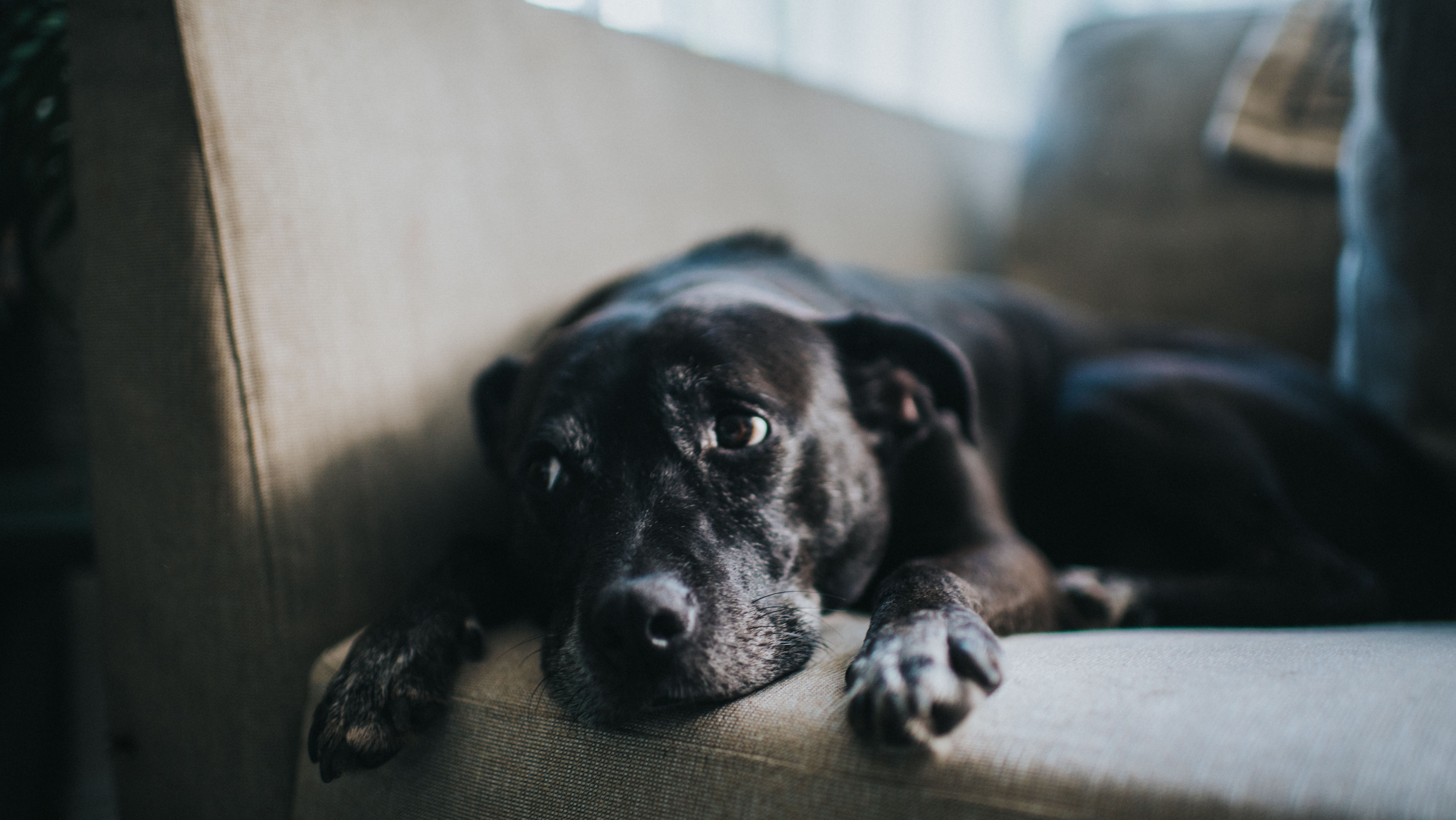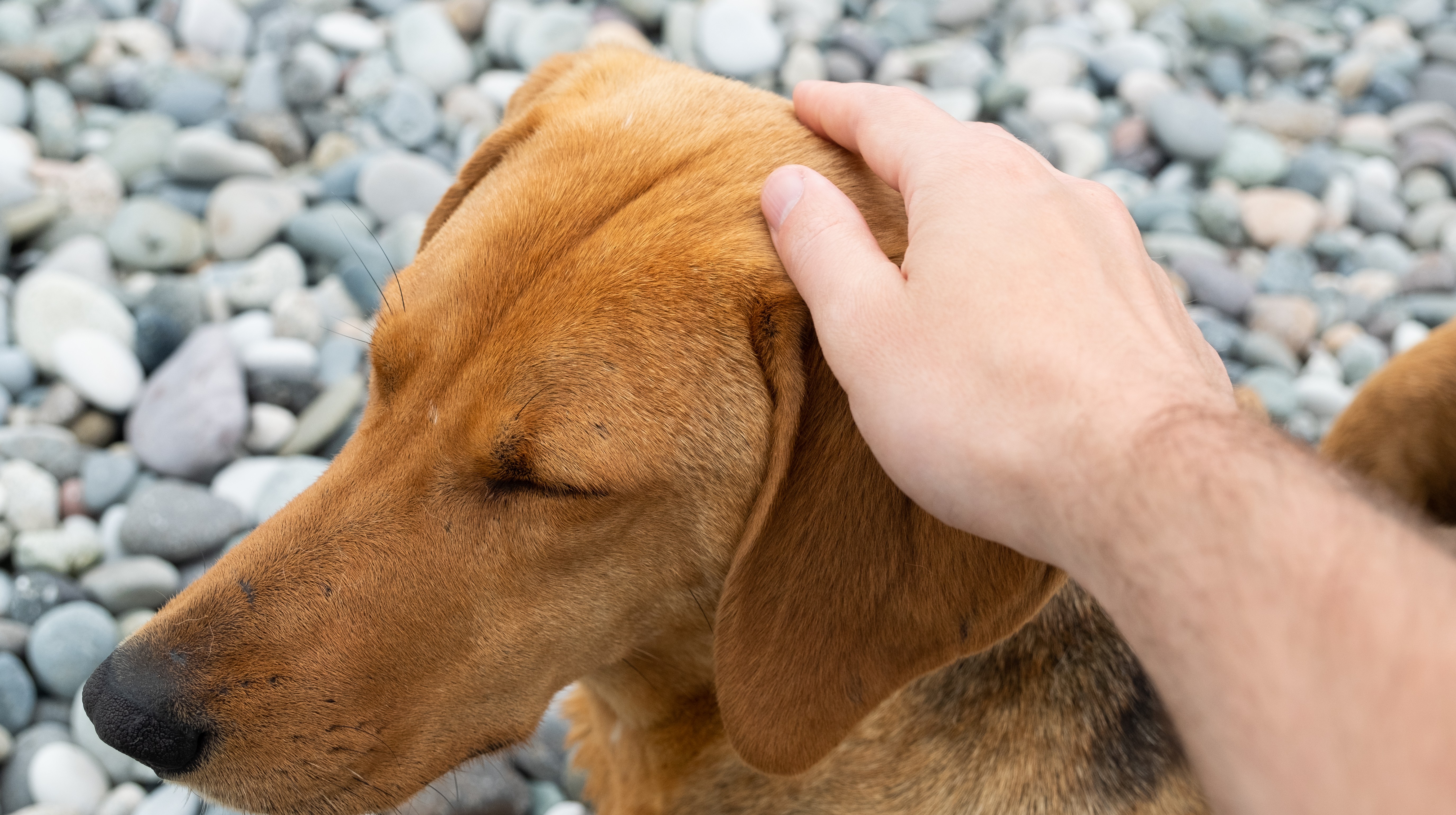6 signs of a UTI in female dogs
Wondering what the signs of a UTI in female dogs could be? We’ve asked a vet for expert advice on what to look out for

If you’ve noticed your dog seems to feel discomfort when urinating and is generally under the weather, you might be wondering what the signs of a UTI in female dogs are. One of the most frustrating aspects of your dog being unwell is being unable to ask them exactly what’s wrong. Instead, we have to put on our own detective hats and try to figure out what symptoms our dogs are displaying.
We sat down with veterinarian Jo Woodnutt to ask her what the common symptoms of urinary tract infections in female dogs are, what to do if you think your dog has one and what you can do to prevent them from occurring again in the future (Woodnutt actually recommends keeping your dog as hydrated as possible, which is a great excuse to invest in one of the best pet water fountains).

Joanna Woodnutt qualified as a veterinarian from the University of Nottingham where she then went on to practice companion animal medicine in the Midlands. She really took to the consulting side of things and helping clients with medical problems such as dermatology, behaviour and nutrition - anything that involved helping clients understand their pets better.
6 common UTI symptoms in female dogs to look out for
We asked veterinarian Jo Woodnutt what the early signs of a UTI in female dogs could present as. Woodnutt says, “It can be hard to spot a UTI in female dogs. You might notice your dog licking at their back end more, as UTIs can be uncomfortable. You may also notice them peeing more than usual, in smaller amounts.”
While it might be trickier for owners to spot a potential problem if they’re not always at home, there will still be signs. Jo says, “If you’re at home during the day, you might see your dog asking to go out more frequently, but if you’re out, then you might just come home to some unfortunate accidents.” Meanwhile, other symptoms can include a change in the quality of your dog’s urine. Jo says, “Some people notice a smell to their dog’s urine that wasn’t there before.”
These are early onset symptoms of a UTI in female dogs, but what emergency signs should dog owners look out for that would require an immediate visit to the vet? Jo advises, “The most important thing is that your dog continues to urinate. Although more common in male dogs, a dog’s urethra (the tube that takes pee from the bladder to the outside world) can ‘block’. This causes urine to build up, putting pressure on the kidneys, which stops them from working properly.
“If the urethra blocks, this causes heart problems and changes visible in your dog's blood, and will eventually become fatal. If your dog appears to be needing to urinate very frequently, but it seems to be painful and the dog is not producing anything, they should be taken to the emergency vet.” Signs of pain while urinating might include crying out or whining, licking their genitals, and physically straining.
So, if your dog is showing any of the below signs, we would advise that you seek veterinary attention as soon as possible:
Get the best advice, tips and top tech for your beloved Pets
- Your dog is licking at their back end
- Your dog might be urinating more than usual
- Your dog might be urinating in smaller amounts
- Your dog might suddenly start having more accidents at home
- The dog’s urine might start smelling differently
Meanwhile, if you see the below symptom, we would advise an immediate visit to an emergency vet:
- Your dog appears to need to urinate frequently, but it seems to cause the dog pain and they can’t actually produce anything

What causes UTIs in dogs?
A UTI is an uncomfortable experience for any being, including dogs. However, what is it exactly that causes a UTI in dogs? Woodnutt says, “Some dogs seem to be more prone to UTIs. Most dogs will never suffer from one, but if your dog regularly does have them then there are some things you can try.
“Firstly, you can get your vet to check them for a medical condition causing the problem. Bladder tumors, bladder stones, and incorrect anatomy can all increase the likelihood of a UTI developing.”
Another great tip is to ensure that your dog is kept hydrated. Woodnutt says, “Ensure your dog has plenty of water available at all times – you might find changing their water bowl for a fountain helps them to drink. In some cases, diets can also be used to prevent UTIs.”
Aside from internal factors, such as medical conditions and what your dog consumes, it’s also a good idea to make sure that there aren’t any external issues causing the problem. Woodnutt advises owners to “make sure your dog’s back end is hygienic by clipping excess fur and washing them if they have diarrhea.” This is because many UTIs in dogs can be caused by bacteria from the dog’s feces traveling up through the genitals and causing inflammation in the urinary tract.

What to do if your dog is showing signs of a UTI
No matter what the cause is of a UTI, what should dog owners do if they suspect that their pup might be developing one?
1. Do not give your dog human medication
If you or your family member have previously been treated for a UTI and you have leftover medication, you might think that it would be cost-effective to just give these to your dog. Unfortunately, many human medications are toxic to pets – or they might simply be ineffective.
2. Seek veterinary advice
As with most conditions, seek veterinary advice sooner rather than later. UTIs are painful and uncomfortable for your dog, so try to book an appointment as quickly as possible so that they don’t suffer needlessly. Plus, the longer you leave a UTI, the more chance there is that the infection can spread to their kidneys – not only will this be more dangerous for your dog, but it’ll also be likely to incur a higher vet bill as well.
As mentioned above, if your dog cannot produce urine and they appear to be in pain while trying to urinate, then we would advise that you seek immediate emergency veterinary care.
Looking for more advice for your dog? You might also want to read: why is my dog always hungry? and Increased urination in dogs.
Louise Carey is a freelance writer and the Editor of sister website Top Ten Reviews. She has been working in publishing for seven years, contributing to publications including The Independent, TechRadar, Digital Camera World and more. As the proud pet parent of a reactive border collie with a food allergy, it’s been necessary for Louise to explore a variety of fun and exciting ways to enrich an energetic dog that can’t always go on walks. She’s passionate about sharing the information she’s learned to help other pet owners as well.

